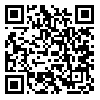The previous studies have shown that the endogenous opiate system depress the baroreflex sensitivity in morphine dependent persons. Nucleus Tractus Soloitarii(NTS) is the main termination site of baroreceptor afferent neurons. The aim of this study was to determine the role of electrical stimulation of Nucleus Tractus
Soloitarii on baroreflex sensitivity in morphine-addicted rats.
Male Wistar rats were addicted during scheduled 10 days with morphine sulphate(i.p.) and anesthetized by Urethane(150mg/100gr body weight i.v.) then cannulated with PE50 tubes filled with Saline/heparin (200u/ml) in femoral artery and vein for recording mean arterial pressure (MAP) and heart rate (HR)
respectively. The electrodes were implanted in NTS, according Paxinous atlas in streotaxic instruments for applying electrical stimulation. Phenylepherine was used as a vasoconstrictor to induce acute arterial pressure. Baroreflex sensitivity was evaluated (ΔHR/ΔMAP) before and after electrical stimulation application in NTS. Control group was received saline instead of morphine.
The results showed that baroreflex sensitivity decreased in morphine addicted rats compared to control. There was no significant changes in mean arterial pressure and HR after electrical stimulation application in NTS in both morphine and control groups, but baroreflex sensitivity increased after application of electrical stimulation in NTS in morphine addicted rats(P<0.05).
It is suggested that application of electrical stimulation in NTS can modulate neurotransmission in central nervous system such as GABAergic function, therefore this modulation may prevent some abnormality in cardiovascular area in addicted rats.
| Rights and permissions | |
 |
This work is licensed under a Creative Commons Attribution-NonCommercial 4.0 International License. |


